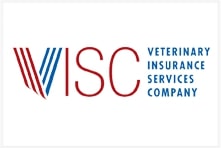By Scott Boggess, CSP, CIE Director, Safety and Health, Preferred Employers Insurance
This article was originally printed in the March/April 2023 issue of the California Veterinarian magazine.
 Veterinarians must wear many hats to keep their practices running smoothly. One important aspect of running a successful practice is onboarding new hires. How employees acclimate to their new job and integrate into the company culture is an important determinant of whether they will be effective contributors. A key component of onboarding is the New Hire Safety Orientation (NHSO). Ensuring that employees understand the hazards of their jobs and are equipped to effectively mitigate them helps improve job satisfaction and decrease risk of workplace illness or injury.
Veterinarians must wear many hats to keep their practices running smoothly. One important aspect of running a successful practice is onboarding new hires. How employees acclimate to their new job and integrate into the company culture is an important determinant of whether they will be effective contributors. A key component of onboarding is the New Hire Safety Orientation (NHSO). Ensuring that employees understand the hazards of their jobs and are equipped to effectively mitigate them helps improve job satisfaction and decrease risk of workplace illness or injury.
One approach to developing an effective NHSO process is to create a checklist to make sure important topics are covered during the first day, first week, and first 30 days. While some checklist items will vary depending upon the practice and the employee’s role, some core topics should be on every checklist.
Start by letting the new employee know the practice is committed to providing a safe workplace and assuring them that, should they become ill or injured on the job, they are covered under workers’ compensation insurance and will be taken care of. Emphasize the importance of immediately reporting any injuries, no matter the severity. Even minor injuries, including small scratches and bites, can become serious when not treated promptly. California requires employers to provide new hires with its Time of Hire Pamphlet no later than the end of their first pay period. The CVMA offers members new hire pamphlets at a discounted rate, which can be found in the CVMA store at cvma.net under the Resources tab.
A logical next step is to review the Injury and Illness Prevention Program (IIPP) for the practice. All California employers must have a current written IIPP and other OSHA-required plans, such as the Hazard Communication Plan, Fire Prevention Plan, Emergency Action Plan, COVID-19 plan, and more. CVMA members can subscribe to the CVMA Guide to Cal/OSHA Compliance. The interactive guide takes you step-by-step through creating a custom written safety plan for your practice that meets the Cal/OSHA requirements. It also assists with implementing your plan, employee training, and recordkeeping. For more information, visit https://cvma-watchdog.net/regulatory-guide/.
Other pertinent topics to include on your NHSO checklist are:
- Animal Handling and Restraint—Bites and scratches are the most common injuries in veterinary practices, followed by strains/sprains from lifting and restraining animals. Describe your practice’s procedures and Personal Protective Equipment (PPE) to minimize exposure to these injuries.
- Sharps/Medical Waste Handling—Containers should be labeled, utilized, and removed from the premises in accordance with California laws.
- Infection Control Practices—Include hand washing and OSHA’s regulation prohibiting the consumption of food and drink where work functions are taking place.
- Radiation Safety—Provide guidance for the safe use of radiation for imaging in your practice. The CVMA offers members the Radiation Compliance Kit, which includes required postings, the “Caution: X-Ray” Sign, and Radiation Safety training materials as well as detailed instructions on how to implement, document, and audit a radiation compliance program. This can be found at cvma.net under the Resources tab by clicking on Products and searching for “radiation compliance.”
- First Aid—Show the employee where the first aid kits are located and explain what actions employees should take if they require first aid.
- Reporting Emergencies—Explain who and how employees should call for help.
- Emergency Evacuation—Provide a link or hard copy of evacuation routes for your building. Walk the employee through primary and secondary routes. Point out the designated assembly area. Discuss special evacuation plans for employees with disabilities.
- Workplace Violence Policy—Provide your practice’s policy for a safe and secure work environment that has no tolerance for harassment, intimidation, threats, or acts of violence in the workplace.
Safety Committees are optional, but can be a good way to increase attention on workplace safety and facilitate employee involvement, especially in larger practices. Once implemented, there are specific requirements that safety committees must meet per California Labor Code, General Industry Safety Orders, Section 3203(c).
Should you have questions or need assistance with developing a New Hire Safety Orientation checklist for your practice, contact PEI Risk Advisors at safety@peiwc.com or 888.472.9001.









 Veterinarians must wear many hats to keep their practices running smoothly. One important aspect of running a successful practice is onboarding new hires. How employees acclimate to their new job and integrate into the company culture is an important determinant of whether they will be effective contributors. A key component of onboarding is the New Hire Safety Orientation (NHSO). Ensuring that employees understand the hazards of their jobs and are equipped to effectively mitigate them helps improve job satisfaction and decrease risk of workplace illness or injury.
Veterinarians must wear many hats to keep their practices running smoothly. One important aspect of running a successful practice is onboarding new hires. How employees acclimate to their new job and integrate into the company culture is an important determinant of whether they will be effective contributors. A key component of onboarding is the New Hire Safety Orientation (NHSO). Ensuring that employees understand the hazards of their jobs and are equipped to effectively mitigate them helps improve job satisfaction and decrease risk of workplace illness or injury.
